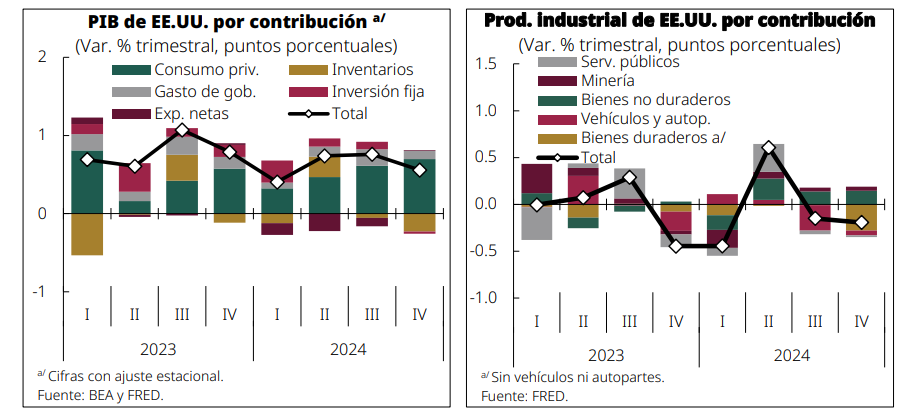Mexican and U.S. industries are becoming increasingly integrated, and the governments of both nations are seeking to strengthen them internally.
For the time being, industrial activity and manufacturing production in the United States fell 0.2% and 0.3% in the fourth quarter, respectively.
With these results, two consecutive quarters of declines have been accumulated.
Mexican and U.S. industries
According to the Department of Commerce, U.S. content in manufactured products varies by country of origin. On average, products manufactured in Mexico include 40% U.S. inputs and parts. On the other hand, products manufactured in Canada contain 25% of U.S. inputs and parts.

Negative results in U.S. industrial production during the last quarter of 2024 impacted key sectors for Mexican exports. Electrical equipment, vehicle and auto parts manufacturing, as well as the aerospace sector, registered declines of 1.0%, 1.0% and 12.5%, respectively. However, electronics production showed growth of 0.7% in the same period.
Industrial linkage
Mexico has a high elasticity with respect to U.S. industrial production and GDP.
The increase in productive linkages is due to the growth of intra-industry trade between the two countries.
Mexico remained the United States’ top trading partner in 2024, as it did in 2023, when it surpassed China. It also managed to increase its share of U.S. trade in goods worldwide, the Census Bureau reported Wednesday.
Mexico’s share of total U.S. goods trade grew from 15.7% in 2023 to 15.8% in 2024, reaching an all-time high.
Mexico stands out for its competitiveness in the export of durable goods, such as cars and appliances. On the other hand, U.S. exporters excel in manufacturing sectors that require high investment in capital and technology, such as industrial supplies and capital goods.
In 2024, U.S. product exports recorded varying levels of year-over-year growth. Sales to Mexico increased 3.5%, reaching US$334.041 billion. In contrast, exports to Canada declined 1.4%, totaling 349.360 billion, while shipments to China fell 2.9%, totaling 143.546 billion.
Background: in 2010, China displaced the United States as the largest manufacturing country, and manufacturing output, measured in each country’s local currency adjusted for inflation, has been growing more slowly in the United States than in China, South Korea, Germany and Mexico.

